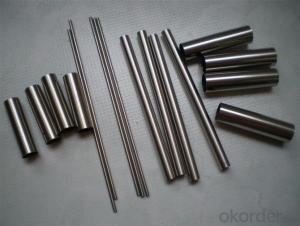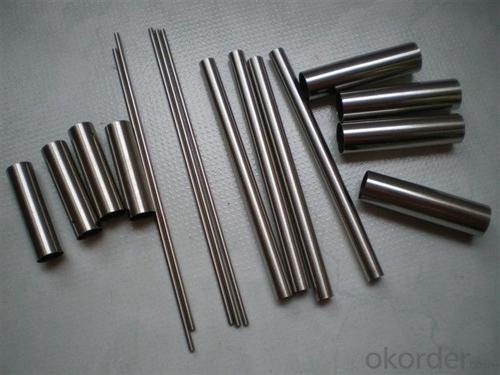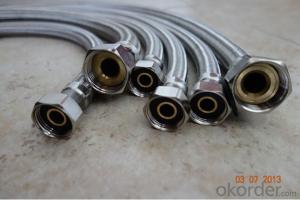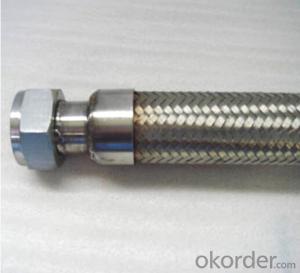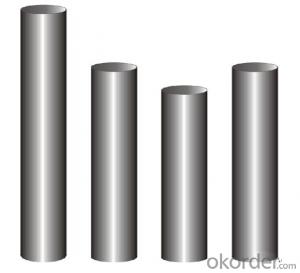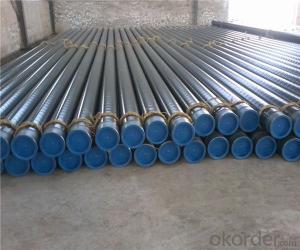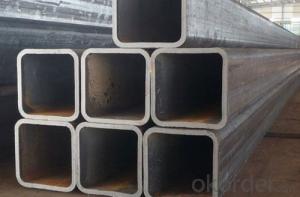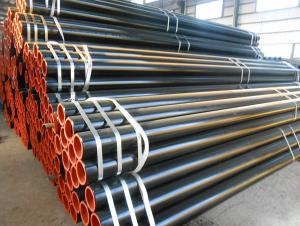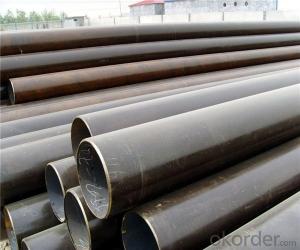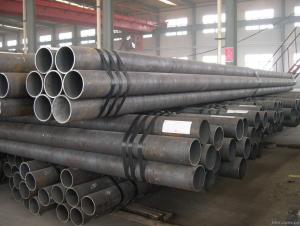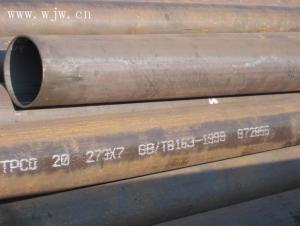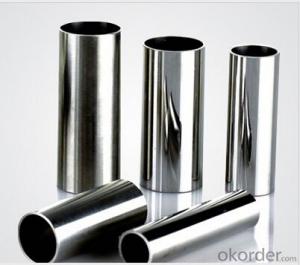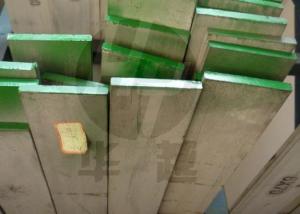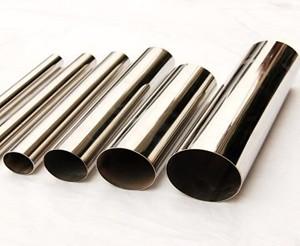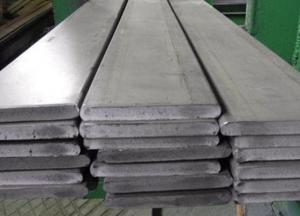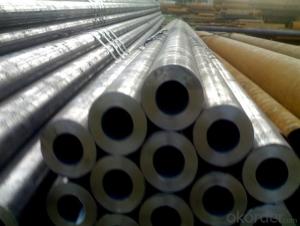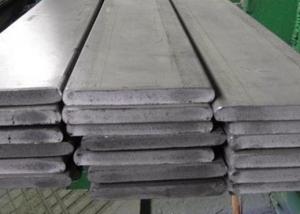Thick Wall Large Stock Fast Delivery Seamless Steel Pipe
- Loading Port:
- Shanghai
- Payment Terms:
- TT OR LC
- Min Order Qty:
- 1000 kg
- Supply Capability:
- 10000 kg/month
OKorder Service Pledge
OKorder Financial Service
You Might Also Like
applications of carbon steel pipe :
(1).Construction: Hall Structure, Sea Trestle, Airport Structure, Shipbuilding, Security Door
Frames, Garage Doors, Strengthening Liners of Steel Doors and Windows, Indoor Partition
Walls, Cable Bridge Structures and Expressway Safety Guards, Balustrade, Decorating,
Residential, Ornamental Pipes
(2).Automotive Parts: Motorcar Case, Car and Bus Manufacture, Vehicles
(3).Agriculture: Agricultural Equipment
(4).Industry:Machinery,Solar Stent, Offshore Oil Field, Mine Equipment, Electromechanical
Hardware, , heavy engineering, Mining and Resources, Process Engineering, Materials Handling, Mechanical Parts
(5).Traffic: Walking Rails, Roll-up Doors, Guardrail, Plaza Structure, Signage, Road Furniture,
Fencing
(6).Scaffolding Tube: Material Storage Racks, Pallets, Hydraulic Platforms, Trusses, Columns,
Purlins, Greenhouse Stands Towers
(7).Other: Sports Apparatus, Leisure Equipment, Furniture, School Furniture
ASTM A335 Seamless Alloy-Steel Pipe
Standard: BS 1139, BS 3059-2, JIS G3454-2007
Grade: 10#-45#, 15NiCuMoNb5, 10Cr9Mo1VNb
Detailed introduction to ASTM A335 seamless alloy steel pipe:
ASTM A335 seamless alloy steel pipe
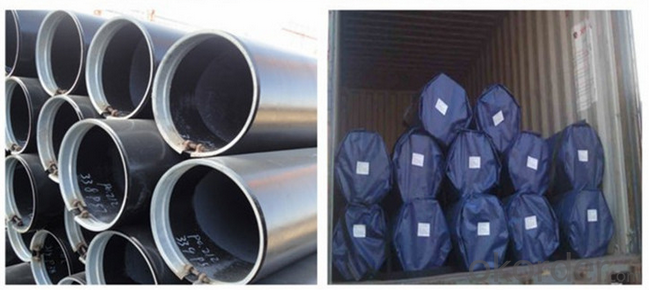
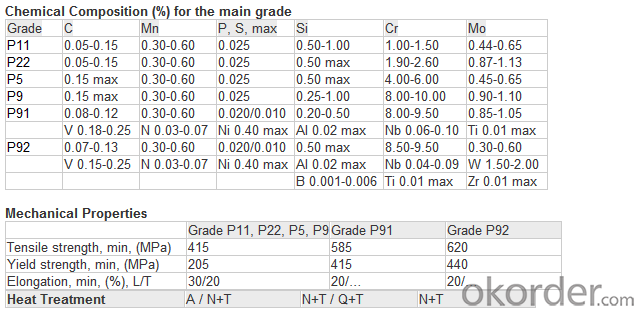
FAQ:
1) why you chose us ?
Professional Manufacturer and supplier of Steel pipe
More than 14 years’ professional producing experience
We can get the lowest ex-factory prices. The price are quite reasonable and it is lower than our commercial peers. also, we can guarantee the qualities of our products.
BV, ISO certificates and SGS test can be provided to assure the quality of our products.
2) Our minimum order quantity:
10 Metric Tons or one 20ft or 40ft Container.
3) How about the Delivery Time?
The steel pipe will be produced since we getting your deposit by T/T or Your original L/C. For normal size, some stocks in our factory now, we can supply once you need.
4)What kind of payment does your company support?
T/T, 100% L/C at sight, Cash, Western Union are all accepted.
5) Do you charge for the samples?
According to our company principle, we just charge for samples, you pay for the freight /courier charge.
6) Main market:
Mid East, South America, Africa, Southeast Asia, India etc
- Q: Can stainless steel pipes be hardened?
- Indeed, the hardening of stainless steel pipes can be achieved by means of a technique known as cold working. To elaborate, this procedure entails subjecting the stainless steel pipes to deformation when exposed to low temperatures, accomplished through methods such as rolling, drawing, or bending. By undertaking this process, the material's strength and hardness are enhanced, all the while preserving its resistance to corrosion. Nevertheless, it is crucial to acknowledge that stainless steel pipes cannot be hardened via heat treatment akin to carbon steels, given that their composition already imparts them with a formidable degree of hardness.
- Q: Can stainless steel pipes be used for seawater applications?
- Yes, stainless steel pipes can be used for seawater applications. Stainless steel is highly resistant to corrosion and can withstand the corrosive effects of seawater, making it an ideal choice for applications in marine environments.
- Q: What is the difference between 304H and 316H stainless steel pipes?
- The main difference between 304H and 316H stainless steel pipes lies in their chemical composition and corrosion resistance properties. 304H stainless steel contains higher levels of carbon than 316H, which provides it with improved high-temperature strength and resistance to sensitization. On the other hand, 316H stainless steel has higher levels of molybdenum and nickel, leading to enhanced corrosion resistance and suitability for use in more aggressive environments, such as marine applications. Overall, the choice between 304H and 316H stainless steel pipes depends on the specific requirements and environmental conditions of the application.
- Q: Are stainless steel pipes suitable for power generation plants?
- Yes, stainless steel pipes are suitable for power generation plants. Stainless steel is known for its excellent corrosion resistance, which makes it ideal for use in power generation plants that involve high temperatures, pressure, and corrosive environments. Power generation plants often use various types of fluids, such as steam, water, and chemicals, which can cause corrosion and degradation of the piping system. Stainless steel pipes can withstand these harsh conditions and provide long-lasting performance. Furthermore, stainless steel pipes have high strength and durability, which is crucial for power generation plants that operate at high pressures. They can handle the stress and strain of the system without the risk of failure or leakage. In addition, stainless steel is also resistant to scaling and fouling, which is important for maintaining the efficiency of the power plant. The smooth internal surface of stainless steel pipes helps to minimize friction and pressure losses, ensuring efficient flow of fluids. Moreover, stainless steel pipes are easy to maintain and clean. They do not require frequent inspections or repairs, reducing downtime and maintenance costs for power generation plants. Overall, the superior corrosion resistance, strength, durability, and efficiency of stainless steel pipes make them highly suitable for power generation plants. They offer a reliable and long-lasting solution for fluid conveyance in such demanding environments.
- Q: How do you prevent leaks in stainless steel pipes?
- To prevent leaks in stainless steel pipes, there are various measures that can be taken: 1. Ensuring proper installation: It is crucial to correctly install stainless steel pipes, which involves using suitable fittings and connectors, securely fastening the pipes, and following the installation guidelines provided by the manufacturer. 2. Regular inspection and maintenance: Regularly inspecting stainless steel pipes can help identify any signs of wear, corrosion, or damage that may potentially result in leaks. This can be done through visual inspection or by utilizing non-destructive testing methods like ultrasonic testing. 3. Implementing corrosion prevention measures: While stainless steel pipes are known for their corrosion resistance, certain conditions can still lead to corrosion and potential leaks. The risk can be significantly reduced by implementing corrosion prevention measures such as using corrosion-resistant coatings, cathodic protection systems, or inhibitors. 4. Proper cleaning and maintenance: Regularly cleaning and maintaining stainless steel pipes can help eliminate accumulated debris, dirt, or chemicals that may cause corrosion or damage. This can be achieved by using appropriate cleaning agents and techniques recommended by the manufacturer. 5. Conducting pressure testing: Performing pressure tests on stainless steel pipes is an effective way to identify any weak points or potential leaks. This involves applying pressure to the pipes and monitoring for any pressure drop, which could indicate a leak. Pressure testing should be carried out during installation and periodically thereafter. 6. Controlling temperature: Extreme temperatures can cause thermal expansion or contraction of stainless steel pipes, which may lead to leaks. To prevent this, proper insulation, installation of expansion joints, or utilization of flexible connectors can be employed to accommodate these temperature changes. 7. Regular monitoring and repair: It is crucial to establish a system for regularly monitoring stainless steel pipes for any signs of leaks or damage. This can include periodic inspections, leak detection systems, or remote monitoring technologies. Promptly repairing any identified issues can prevent further damage and potential leaks. By adhering to these preventive measures, the risk of leaks in stainless steel pipes can be significantly minimized, ensuring their durability and preserving the integrity of the system they are a part of.
- Q: Can stainless steel pipes be bent or shaped easily?
- The flexibility of stainless steel pipes is influenced by several factors, including their thickness, diameter, and grade, which determine how easily they can be bent or shaped. In general, stainless steel pipes possess greater resistance to bending when compared to materials like copper or aluminum. However, by utilizing specialized tools and techniques such as pipe benders or hydraulic presses, it is possible to bend or shape stainless steel pipes according to specific angles or curves. It is worth noting that excessive bending or shaping can potentially weaken or distort the stainless steel pipe, so it is crucial to adhere to proper procedures and guidelines in order to preserve the structural integrity of the pipe.
- Q: Can stainless steel pipes be used for water treatment facilities?
- Stainless steel pipes are suitable for water treatment facilities. The reason behind this preference is the excellent corrosion resistance properties of stainless steel. Since water treatment facilities handle various chemicals and substances that can cause corrosion in pipes, stainless steel is the ideal material choice. It provides a long-lasting and durable solution for transporting water and other fluids. Moreover, stainless steel pipes have a smooth surface finish, preventing the growth of biofilms and reducing the risk of contamination during water treatment processes. This is crucial for maintaining the quality and safety of the treated water. Another benefit of using stainless steel pipes in water treatment facilities is their ability to withstand high temperatures and pressures. They can handle the demanding operational conditions typically encountered in water treatment processes. Furthermore, stainless steel pipes are hygienic and easy to clean, making them perfect for use in water treatment facilities where cleanliness and sanitation are of utmost importance. In summary, stainless steel pipes are a reliable, corrosion-resistant, hygienic, and durable solution for water treatment facilities. They are well-suited for transporting water and other fluids in such settings.
- Q: In stainless steel tubes, why are there some SS in the back and some standard L, such as 316L and 316SS? What's the difference?
- 316SS carbon content is higher than 316L (with L indicating ultra low carbon, corrosion resistance of chloride ion, improve its resistance to intergranular corrosion and oxide stress corrosion resistance), mechanical properties,.316SS strength higher than 316L316L is the steel that continues to reduce carbon content on the basis of 316316L is more resistant to corrosion due to its low carbon content
- Q: What are the temperature limitations of stainless steel pipes?
- The temperature limitations of stainless steel pipes rely on the particular grade of stainless steel utilized. In general, stainless steel pipes can endure high temperatures of up to 1200°F (649°C) without experiencing significant distortion or harm. However, the highest operating temperature can vary depending on the alloy composition and its mechanical properties. For example, austenitic stainless steels, like grades 304 and 316, are commonly applied in various industrial uses and can typically tolerate temperatures of up to 1500°F (816°C). These grades provide good resistance to corrosion and excellent toughness, making them suitable for high-temperature environments. Conversely, ferritic and martensitic stainless steels, such as grades 409 and 410, have lower resistance to high temperatures compared to austenitic stainless steels. They can generally withstand temperatures of up to 1200°F (649°C) before experiencing a significant decrease in strength. It is crucial to note that prolonged exposure to high temperatures can result in stress corrosion cracking and reduce the overall lifespan of stainless steel pipes. Therefore, it is important to consider the specific application and select an appropriate grade of stainless steel that can tolerate the desired temperature range. It is recommended to consult with a materials engineer or refer to industry standards and guidelines to ensure the safe and reliable operation of stainless steel pipes at elevated temperatures.
- Q: Can stainless steel pipes handle high temperatures?
- Yes, stainless steel pipes are capable of handling high temperatures.
Send your message to us
Thick Wall Large Stock Fast Delivery Seamless Steel Pipe
- Loading Port:
- Shanghai
- Payment Terms:
- TT OR LC
- Min Order Qty:
- 1000 kg
- Supply Capability:
- 10000 kg/month
OKorder Service Pledge
OKorder Financial Service
Similar products
Hot products
Hot Searches
Related keywords
